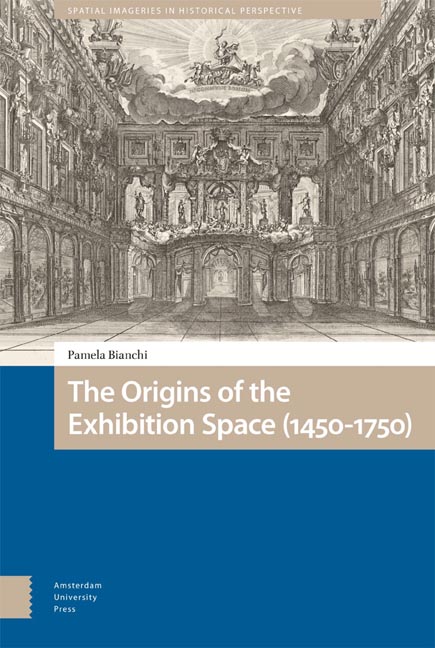4 - (Public) Exteriors
Published online by Cambridge University Press: 14 October 2023
Summary
Abstract: This chapter focuses on outer spaces and studies how and why collections were exhibited in gardens, open arcaded corridors, courtyards of palaces, and in religious spaces and inside the entire city. The study proposes the city as a field of experimentation for shaping the ideas of exhibition space and exhibiting. For churches, cloisters and adjacent squares, the analysis follows the study traced by Francis Haskell and considers them at the origin of the history of exhibitions. The chapter continues with the study of other venues of exhibiting (Italian botteghe, northern panden, Parisian alternative exhibitions), thus suggesting a reinterpretation of the spatial and cultural history of seventeenth- and eighteenth-century society.
Keywords: city, urban layout, exhibition design, religious exhibitions, facades, art market
Contrary to the idea of the house (as a place to exhibit first the collector’s symbolic image and then artworks), public space was rather considered the place in which artists, collectors, merchants and amateurs could exhibit, sell, buy and contemplate arts. Already in the fifteenth century, sacred or profane recurrent events staged rudimentary exhibitions in which paintings were hung from windows, façades or walls. In France, for instance, the Beaucaire fair in Occitanie, Troyes in Champagne, or the Lendit fair in St-Denis, near Paris, allowed artists to exhibit their creations. In Italy, among several fairs (such as those in Alessandria, Verona and Padua), the Festa della Sensa in Venice was so famous among the society and artists of the time that some sources recorded paintings by Lorenzo Lotto and the Bassano brothers. We also know of a 1540 exhibition staged in Antwerp by the local corporation of painters. Like that of Bruges, this fair welcomed lesser-known painters by giving them a stand (pand) to exhibit their productions.
Beyond feasts, street displays and public venues, also pharmacies, libraries, ateliers and shops (botteghe) were spaces for exhibiting. Especially in Rome, where, in the sixteenth century, collectors already showed part of their collections, artists thus contrived temporary and ephemeral exhibition spaces.
Gardens, Outer Loggias and Inner Galleries
Before the appearance of the first places designed expressly to house collections of paintings and ancient statues (of which the Farnese Gallery is an emblematic example), other venues animated the exhibiting geography of the time.
- Type
- Chapter
- Information
- The Origins of the Exhibition Space (1450-1750) , pp. 131 - 178Publisher: Amsterdam University PressPrint publication year: 2023



